LARGE BRADFORD BROTHERS SEXTANT
Ca 1855 – 1860
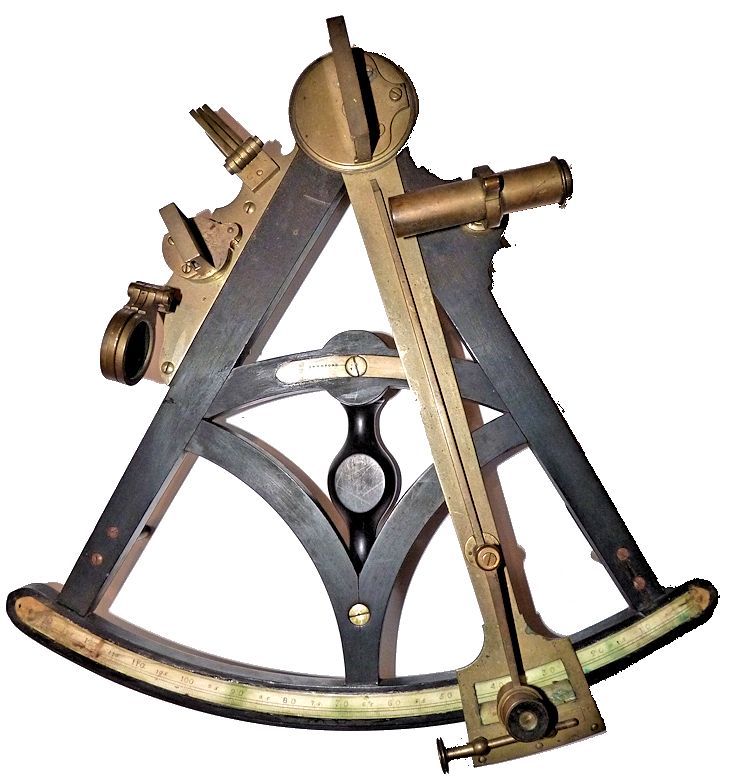 Possibly the
Possibly thePrize Winning Design of 1863 Presented
is a very large, unusually advanced, sextant with an Ebony frame and a brass index arm 14 inches long.
The frame is fitted with a turned Rosewood handle that is an unusual feature for a sextant of this size and period. The ivory
badge on the crossbar is imprinted “Bradford” signifying a group of three brothers, George, Isaac and John, who
were active as instrument makers in London from the 1820’s through the 1860’s. In 1863 one of their instruments
was given a prize for excellence.The
brass index arm has a brace down its center, a swing arm magnifier and endless tangent screw for fine adjustment, all advanced
features. The arc’s scale measures from 0 to 130 degrees, with small pieces missing at either end that have slightly
lifted. There are three square mounted index shades and three round horizon shades. The sextant is currently fitted with a
removable sighting tube mounted within a brass collar. The unit can be moved in and out by turning the knurled knob at the
rear, another advanced feature. The horizon mirror is mounted on a adjustable turnstyle. All of these special features
are made to the highest quality.
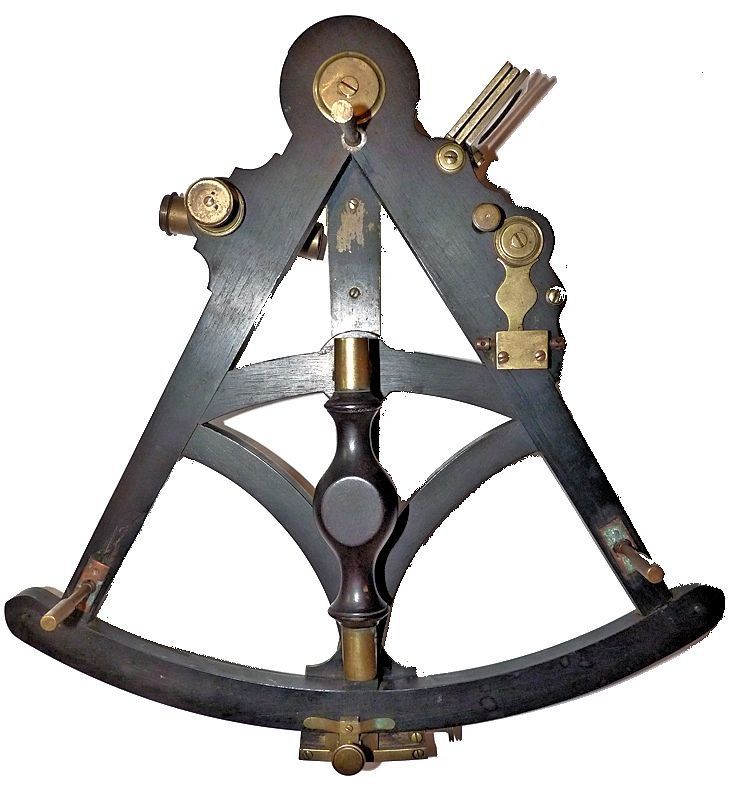 Back of the unusually advanced Bradford Sextant
Back of the unusually advanced Bradford Sextant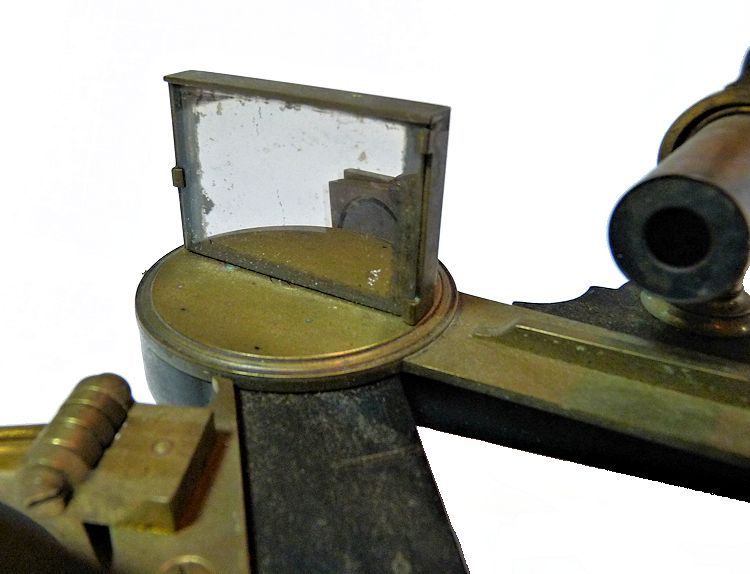 Very good Index
Very good Indexmirror, three shade glasses and sighting tube
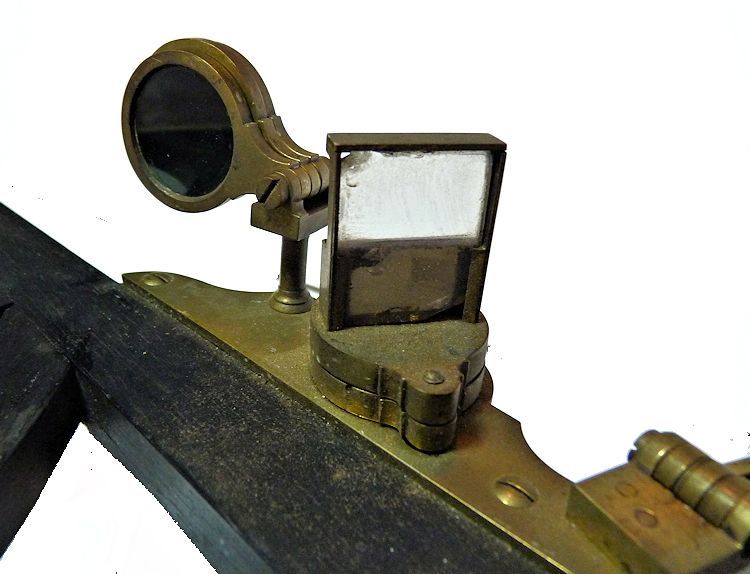 Very good Horizon mirror of Bradford sextant
Very good Horizon mirror of Bradford sextant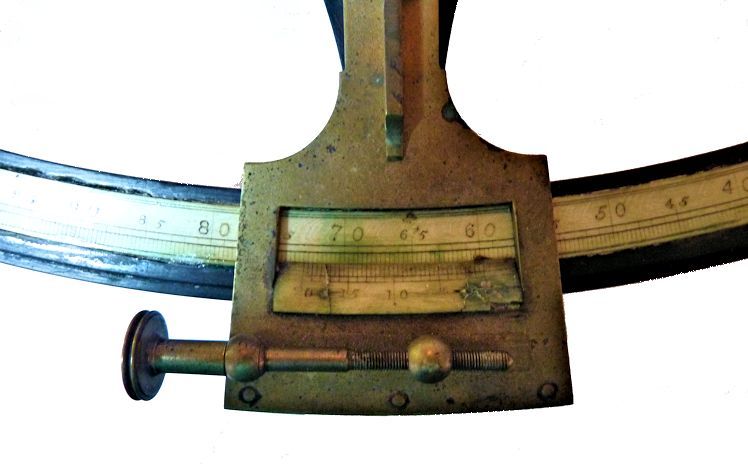 The sextant’s
The sextant’svernier scale reading right to left in 0 to 20 arc minutes. Note the verdigris
The instrument is in good condition except for some minor faults. Both of the lower legs have had earlier repairs
to their mounts. The graduated arc is slightly discolored and missing a small piece at either end that have slightly lifted.
The voids created have been filed in. All the hardware is present and original to this instrument. The index
and horizon mirrors are in very good condition considering their age. There are two spots of green verdigris on the vernier
around the pins holding the scale and on the leg mounts.
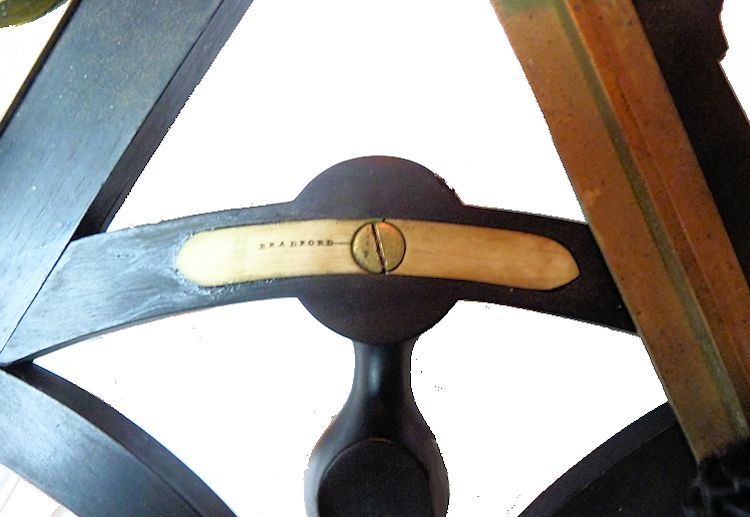
The Bradford name on the crossbar The brass fittings are precisely machined, making this instrument a work of manufacturing
excellence for this period.DIMENSIONS: Arc reads – 0 to +130 degrees Length of index arm 14″ long Width of frame at arc 13 3/4 ” wide
Index mirror 50 x 34 mm Horizon mirror – 28 x 21 mm Three movable index shades Three moveable horizon shades Weight 3 Lbs. 10 oz. octant
enumerated above. We have never before seen them on a 19th Century wood frame sextant. The large size contradicts
these advancements since improved methods of manufacturing typically result in making instruments smaller rather than larger.
Baring this anachronism, we date this sextant to the 1860’s and submit that it may be the one that won a prize in 1863. A rare, desirable, and special example of
what may be the prize winning Bradford sextant of 1863
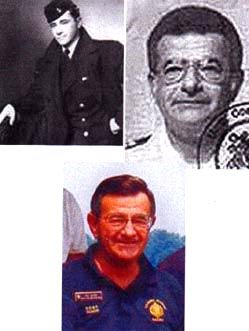
few company’s still selling navigation instruments that know anything about them. For purposes of judging whether Joel’s
opinion counts, he was the editor of the chapter on sextants of the 1977 Edition of “Bowditch”, The American
Practical Navigator, NAVPUB 9; a member of the U.S. Naval Academy Navigation Symposium Board, 1975 -1978; the author of a
book on marine sextants, Cornell Maritime Press,1975, and the founding president of Nautech Maritime Corporation which partnered
with Tamaya in the introduction of the MS 733 Spica, the MS 833, Jupiter, MS 933 Venus sextants and the famous NC-2 navigation
computer, in the U.S. market. Joel is also a retired Master Mariner, and held a U.S. Navy “D” Qualification
as a Senior Skipper – Oceans. From 1995 through 2000, he served as a Varsity Offshore Sailing Team coach at the U.S.
Naval Academy.
